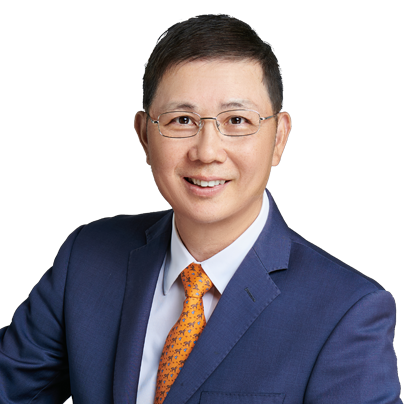China's Green Light on Stem Cell, Gene Diagnosis & Therapy
China's Green Light on Stem Cell, Gene Diagnosis & Therapy
On August 13, Shanghai Government promulgated the Several New Measures to Further Open Up the Service Industry of Shanghai (《上海市新一轮服务业扩大开放若干措施》) (the “Measures") in an effort to promote downsizing the negative list of industries forbidden to foreign investment. For the first time, the Measures explicitly states that the Shanghai Government is “striving to grant permission to foreign investment in research and application of technologies in human stem cells, gene diagnosis and therapy". The statement is trail-blazing in that it seems to have opened up a once forbidden area to foreign engagement. Historically, Special Administrative Measures (Negative List) for Foreign Investment Access (Edition 2018) (《外商投资准入特别管理措施(负面清单)(2018年版)》), Industry Catalogue of Foreign Investment (Edition 2007 and Edition 2011) (《外商投资产业指导目录》), Special Measures for Foreign Entry in Shanghai Free Trade Zone (Negative List) (Edition 2013 and Edition 2014) (《上海自贸区外商投资准入特别管理措施(负面清单)》) all explicitly listed the human stem cells, gene diagnosis and therapeutic technologies as fields forbidden to foreign investor.
1
New Opportunities
Development of gene therapeutic products has been rapid in China. According to data published by the China National Food and Drug Administration Evaluation Center (CDE), it has processed and accepted IND applications for 49 therapy products, including 19 products with clinical approvals, among which 13 are CAR-T products, 1 is TCR-T product, 3 are stem cell products and 2 are others. However, none of the applications are submitted by foreign invested companies. Foreign invested companies must be cautious even in areas not forbidden for foreign investment. Take cell therapy industry as an example, if certain technologies of cell therapy involve gene-related operation, it is likely to trigger liabilities. Therefore, foreign investment in areas of cell therapy, organ transplantation, gene therapy has been hindered due to the difficulty and uncertainty in deciding what exact activities constitute “human stem cells, gene diagnosis and therapeutic technologies" in the past. Many foreign investors had to use VIE structure or formulate complex indemnification mechanism over the target company to avoid violation of foreign entry restrictions in sensitive medical industries. Should the Measures be implemented, foreign invested company may become bolder and more active in researching, development and commercialize technologies in human stem cells, gene diagnosis and therapy in China.
The Measures released a positive signal to attract foreign investment into previously forbidden areas. Some view the Measures of Shanghai Government as a strategy to compete with other major cities in China in attracting foreign investment in biological areas. In fact, many cities have been developing and expanding biotechnologies for years such as Suzhou, Hangzhou, Chengdu, Guangzhou, Dalian etc. Shanghai may take a bold step to open up the areas of human stem cells, gene diagnosis and therapy so as to win the edge in attracting foreign investment. Should restrictions on human stem cells, gene diagnosis and therapy be loosened in the future, foreign investment in these areas will boom.
2
Challenges in Compliance and Risk Management
Despite the bright perspective, post-investment management of human genetic information collected within China may become an issue to be dealt with caution by foreign investors in stem cell and gene diagnosis related areas. The Regulations of the People's Republic of China on the Management of Human Genetic Resources (the “Regulations"), published by the State Council on June 10, 2019, tightens regulation and supervision over activities related to human genetic resources in China. Foreign companies who are engaged in the use of human genetic resources must follow specific rules in the exploration, storage and export of Chinese human genetic materials.
In particular, the Regulations stipulates that:
-
research projects involving human genetic resources should be conducted in cooperation with Chinese partners and subject to governmental approvals;
-
governmental approval should be replaced by more relaxed filing for record in international cooperative clinical trials using human genetic resources only for the purpose of marketing approval of drugs and medical devices;
-
governmental approvals should be obtained prior to transfer of human genetic materials abroad;
-
IPs generated from using human genetic human resources should be shared with Chinese partners;
-
human genetic material should be deemed as an important strategic resource of China and national security review and state secret review may be conducted on activities related to human genetic resources; and
-
significant penalties may be imposed on entities and individuals, including the legal representative and management personnel of a company, in case of violation of the Regulations.
Please refer to our previously issued article New Rules on Exploitation of Human Genetic Resources for more detailed information.
3
Legal Structuring and Risk Mitigations
Though the Measures gives a positive sign that foreign investors may find new opportunities in the investment of research and application of technologies in human stem cells, gene diagnosis and therapy, the Regulations may work as a check and balance to impose restrictions on such investors in their management of human genetic resources they use.
To have a reasonable investment structure set up in the beginning and avoid unnecessary compliance risks in the future, it is always advisable that foreign investors seek advice from professionals. Whether the traditional red-chip structure is suitable for a particular deal? How an international research and development contract should be designed? What governmental procedures need to be gone through before certain human genetic information can be shared with foreign party or transferred abroad? All of these questions have to be answered on a case by case basis. Besides, those current controlled structures, such as VIE structures, might also need to be reviewed since some overseas stock exchanges such as HKSE, only allows VIE structure for foreign investment in restricted or forbidden areas.










